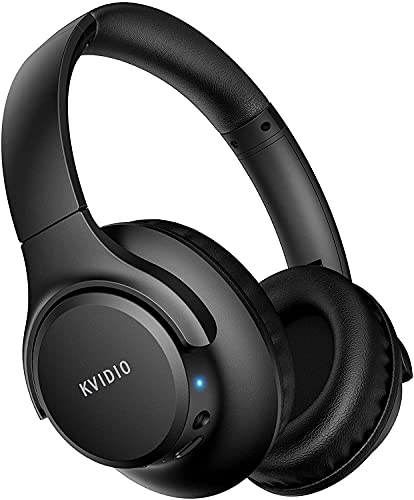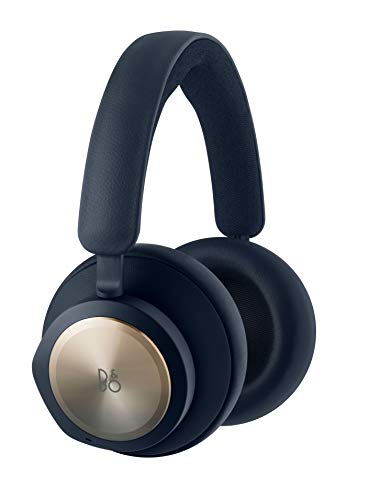 The Difference Between Over Ear and On Ear Headphones
The Difference Between Over Ear and On Ear HeadphonesOver-ear headphones are designed to protect your ears. This allows for larger drivers and more space, resulting in a truly amazing sound. They are typically designed for audiophiles and can be expensive.
They are usually foldable which makes them a great option for those who travel. They are also an ideal choice for exercise because they're not as hot and don't exert pressure on your ears like many earbud models do.
Noise Cancellation
If you're planning to invest some money on headphones, you must ensure that they're equipped with the most effective noise cancellation features that are available. Over-ear headphones are the best bluetooth over ear headphones in this regard as they provide an ear-to-ear seal and can block out the most outside sound. This also means that they are more bulky than on the ear headphones. They are more difficult to store in small bags or backpacks when traveling.
On-ear headphones are a compromise in terms of audio quality and noise cancellation, as they do not seal tight around your ears. This lets ambient noise to be heard, but also gives you the opportunity to hear more of what's happening around you.
Over-ear headphones are the least portable of the three common headphone types, but they are the ones with the most effective noise cancellation. This is largely due to their dimensions, which allow bigger drivers to deliver superior audio quality. As a result, they are able to produce a full range of frequencies with astonishing clarity and detail. For this reason, over-ear headphones are the preferred choice for professionals in the music industry and audiophiles.
In addition to their excellent audio quality, over-ear headphones are less likely to damage your hearing when worn for extended periods of time. This is because earbuds can cause earwax to build up and can impair your hearing. Over-ear headphones are less likely to do this, as they don't sit so close to your eardrums.
Many over-ear headphones feature active noise cancellation, which blocks external sounds by producing opposite waves to those coming from the source of your audio. This is achieved through the use of a series of microphones within the headphones which listen for ambient noise and then generate the opposite signal to block it. It will depend on the way you listen to podcasts and music, as well as whether you listen in public.
Sound Quality
A great pair of headphones is the most important piece of technology for many audiophiles. They allow us to listen to our favourite music and media with ease and separate us from the outside noise, without disturbing others. There are a variety of choices available today, ranging from basic earbuds, to high-end studio monitors for musicians and sound engineers. The most popular headphone remains the over-ear model.
The primary benefit of headphones that are over-ear is their better audio quality, thanks to the larger drivers that create a more expansive and immersive listening environment. Over ear headphones, also known as circumaural headphones, are also more comfortable than on-ear models because they cover your ears entirely. This helps to prevent the build-up of heat and decreases pressure over time, making them suitable for long listening sessions.
Another benefit is that they're able to cancel out more background noise with their bigger earpads. This provides more efficient passive noise cancellation than on-ear or in-ear models. They're not perfect, and may leak sound when used in public areas or at work.
On the other hand, over ear headphones can offer impressive sound quality even when not using active noise cancellation or a Bluetooth connection. They offer an even and [Redirect-Refresh-0] natural listening experience, which can be customised through the equalizer feature of the headphone app or by selecting the preset.
Over-ear headphones feature a wider soundstage and better bass response than on-ear or in-ear models. They are also a great choice for those who listen to the majority of rock or dance music as they can reproduce bass with much more power.
Over ear headphones are the most well-known headphone style and are the first to receive the latest technologies like active noise cancellation and apps that are companions. Over ear headphones tend to have longer battery life compared to on-ear or in-ear headphones because they can fit larger batteries.
The ideal headphone model for you will depend on your specific requirements and preferences. On-ear and in ear headphones are more comfortable to wear when working out or commuting than over-ear headphones. They are less heavy and fold up to take up less space. On-ear headsets are also more stable than over-ears when exercising. They tend to have longer battery life, and can be replaced easily in the event of damage during exercise.
Comfort
Most people who wear headphones select either the ones that rest on the top of their ears or those that are positioned above them. However, both have advantages and disadvantages in terms of comfort. over-ear noise cancelling headphones headphones over ear headphones, for instance, are great for listening to music in loud environments. They block out sounds from outside. However, they can create some discomfort in the ears after long listening sessions. On the other hand, on-ear headphones do not put pressure on your ears like over-ear models do but they also don't have the same isolation advantages. Nevertheless, many on-ear headphones come with different tips for your ears to help you to find the perfect fit.
On-ear headphones can also be stored easily in a bag or backpack. On-ear headphones can be used with wireless and wired connections. In contrast, over-ear headphones require more power because they have to form a seal over the user's ears. This can cause them to feel heavier on the head and neck after a while.
It's crucial to consider all of these aspects when deciding which type of headphones is right for you. Based on the type of media you listen to, the environment you're in, as well as your budget, you may prefer one type over another. sony over ear headphones-ear headphones are generally better in terms of audio quality and support for ANC than on-ear headphones.
On-ear headphones provide a great balance between comfort and portability, however they are also a great option for those who don't mind paying more for better sound. They're also an excellent choice for commuters who want to listen on the move to music and podcasts. On-ear headphones are more comfortable and lightweight than their over-ear counterparts and some fold for easy storage. They aren't as practical for smartphones, as the earcups rest on the back of the headbands instead of your ears. They can fall off your ears if they aren't secure them properly. This can result in hot spots and pressure on your ears.
Portability
After your phone and computer A quality pair of headphones is your third most essential personal technology product. The type of headphones you pick, whether earbuds or wireless, in-ear, over-ear, [Redirect-302] or true wireless, is dependent on your personal preference and the comfort you enjoy. Budget is the most important consideration when choosing a new pair. The headphones you buy will determine how much music and audio you can listen to, whether you can completely immerse yourself in the sound of your surroundings and how long you can use them for.
In general, on-ear headphones provide longer battery life than earbuds or over-ear models. The smaller earpads make the headphones lighter, which reduces the amount of battery used. And most on-ear headphones fold their earcups into a compact size which makes them easy to pack into your backpack or briefcase. They also sit comfortably on your neck and head, so you can wear them for longer durations without discomfort.
On-ear headphones can be an ideal choice if are planning to use them in public spaces like gyms or offices where you must be aware of your surroundings. They block a significant amount of background noise, but they can leak more than other types of headphones. over in ear headphones-ear headphones are an excellent choice for home or office use since they are less likely to leak and provide a more closed-off listening experience.
 Over-ear headphones are bigger in size, allowing drivers that have better audio quality. They also provide greater bass. The extra room in the earcups allows them to have wider, more open soundstages and less harmonic distortion. They're more expensive than on-ear headphones but they're an excellent value for music lovers as well as audiophiles.
Over-ear headphones are bigger in size, allowing drivers that have better audio quality. They also provide greater bass. The extra room in the earcups allows them to have wider, more open soundstages and less harmonic distortion. They're more expensive than on-ear headphones but they're an excellent value for music lovers as well as audiophiles.Over-ear headphones are heavier than the on-ear models, and many don't come with a carry bag or foldable design. The majority of over-ear headphones come with the capacity to last 40 hours or more on one charge. Some even last longer if ANC disabled.


